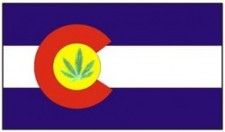By Micah Johnson
What makes a successful edible? Or, better yet, how do you turn grandma’s secret cannabis-infused recipe into a retail-ready crowd-pleaser?
We set out this past year to study why medical marijuana patients will walk into a dispensary and purchase one edible – in whatever form – over all others. The research data was ironically astounding and, simultaneously, not at all. Many edibles companies have forgotten time-tested rules regarding price, presentation and the other pillars of building a successful business. We counted at least five main factors that affect any choice of medicated food – factors that ultimately govern an edible’s ability to become a “staple” product for patients.
#1. Presentation: An edible should win over the patient at first glance. This can be difficult for a number of reasons, one being that food production is almost all hand-made in this early stage of the industry, meaning there’s a much greater chance of imperfect shelf presentation. The edible also should not be broken, leaking in any way, exposed whatsoever to air, smudged, too gooey or too dry. Packaging should be as clean-cut as possible. Colors work best both within the product and on the label, and earth-tones always move slower (i.e., Fruity Pebble bars will always outsell those made with plain Rice Krispies).
A “staple” edible should not have a short shelf life. It should not require refrigeration, stirring, shaking or preparation. Many companies package their goods in opaque containers to preserve potency. This is only wise when the food’s image can be viewed on the label or in-store display. Otherwise, the consumer – and even the retailer serving them – will question what is inside.
The funny thing is that most of the research in retail presentation has already been done. Gas stations sell certain snacks – especially near the register (think impulse buy) – for good reason. Don’t try to recreate the snack wheel. Find the most popular non-medicated version of the edible and study, study, study.
#2. Price: There is only so much a person will consider paying for any food, especially when the medicated version costs almost as much as their standard raw-cannabis purchase. This is why retail price must match the package size, apparent quality and potency. A piece of gum can’t cost more than $3, a 30mg THC soda no more than $7, and so on. The only way around this is through marketing and hype. In Colorado, the most successful edible is an inch-long tootsie roll called Cheeba Chew. Thanks to branding, advertising and multiple Cannabis Cup victories, Cheeba Chew is now a household name in the MMJ industry, and no one questions the price for such a tiny piece of candy.
Consider for a moment how movie theaters sell boxes of candy at a 1500% markup. One reason is that the giant candy boxes contain more than a regular gas-station single serving, but not as much as the box suggests. With edibles, a similar situation is possible: Instead of selling four extremely potent – but small – gummy bears per package, why not sell 15 with the same accumulative THC content? After all, the cost of production is most closely tied to the amount of cannabis per batch, not the other raw ingredients. Thus, you can often deliver higher quality by offering higher quantity. This helps a patient perceive the edible as more of a snack – rather than expensive per-unit medicine – to be gobbled up in entirety without the associated feeling of being ripped off.
An important warning on price: If an edible costs too much to produce, it will be impossible to sell. While some patients are wooed by coconut or truffle oils, no one wants to pay extra for them.
#3. Potency: Customers must be convinced that eating cannabis is superior, or at least comparable, to smoking. Cannabinoid content is more linked to price than any other factor; it’s what gives the product value. Potency, therefore, must be explicitly portrayed on the label, and typically in terms of milligrams THC (as well as CBD, CBN, etc.). The key to creating a staple product, however, is proving this potency time and time again.
When manufacturers don’t actually know whether they are activating the THC in each batch, they end up putting duds on the store shelf. This colossal faux pas can result in patients shrugging off edibles or even their neighborhood dispensary.
Then again, potency can be difficult as a selling point, since everything from metabolism to dosage frequency can affect an edibles’ unique physical effects, person to person. Some may be incapacitated by the whole product, some may not feel it at all. Rarely – but often enough – a patient may complain about an edible being “too strong.” In these cases, it’s best to urge careful dosage (it helps to print the actual measurements on the package, such as THC levels on a soda bottle’s label). Remind your customers that edibles’ effects can take hours to kick in and may last the entire day.
#4. Palate: Customers who routinely buy a specific niche item from their grocer will probably want to try its medicated equivalent. Lovers of Key lime pie, for instance, may jump when they see it at the dispensary. But if and when they taste overpowering cannabis or think their “favorite” recipe has been meddled with, they may stick with an entirely different food, one that they can’t compare “perfection” to.
It’s not an easy thing to predict, but much easier if the budtender or dispensary operator has had the opportunity to sample and determine the tastiest goods. This is because consumers purchase foods they think will taste good. When patients see dried blueberries or toasted coconut covering Mountain High Suckers, they grab them in fistfulls over the naked versions of their competitors. Patients will almost always go for gummies, succulent lemon pastries, or peanut butter cookies with Hershey Kisses in the middle (anything that disappears first from the holiday platter of goodies will disappear first from your shelves). Surveying your customers to determine their dietary “guilty pleasures” will help ensure an irresistible menu that doesn’t bother with unnecessary, unsellable frills.
#5. Practicality: Most of all, a staple edible must be one that can be consumed day in and day out, or at least in rotation with a small handful of other staples. Whereas a person may not mind tossing a few offbeat culinary bits into their routine for medicinal purposes, they will not change their diet. You can’t expect to routinely sell salsa because a patient doesn’t always carry chips to dip salsa.
Patients will, however, buy small items they can take anywhere and eat without a mess. They will enjoy resealable packages or pre-measured dosage. Finally, they will not want to be conspicuous: It is far less questionable to pull out a succulent M&M’s cookie for lunch, than, say, a whole box of unseasonal peanut brittle.
The final, unofficial rule governing edibles? Go with your gut. If the practicality, price, potency, presentation and palate are up to par, then ask whether you would habitually purchase and use the edible over raw cannabis and its derivatives. If you find yourself convinced, chances are that your customers will follow suit.
Micah Johnson is president and co-founder of Cannapages.com, a Colorado-based medical marijuana directory and tech agency.




